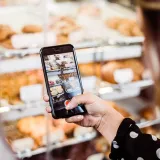
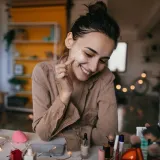
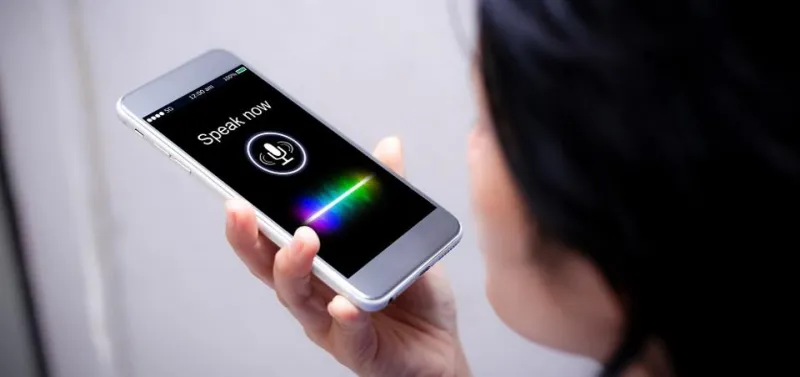
Emerging technology: fad or fab?
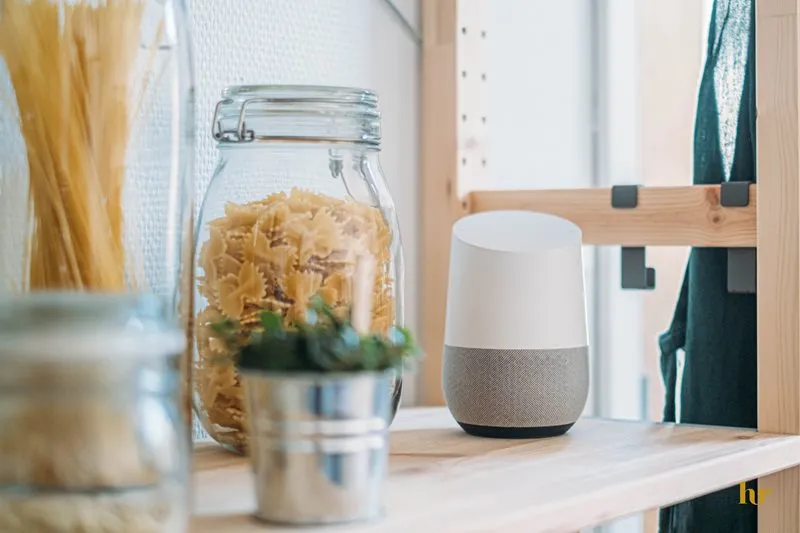
In 2019 we conducted research on Gen Z to understand their shopping behaviours. We presented this research in 2020 (just before COVID hit!) at our Future of Beauty: Is your brand ready for Gen Z event. One of the key insights we found were how Gen Z use technology in their shopping behaviours for health and beauty products.
So, let’s start with Voice, the most talked about (Ha!) emerging tech out there….
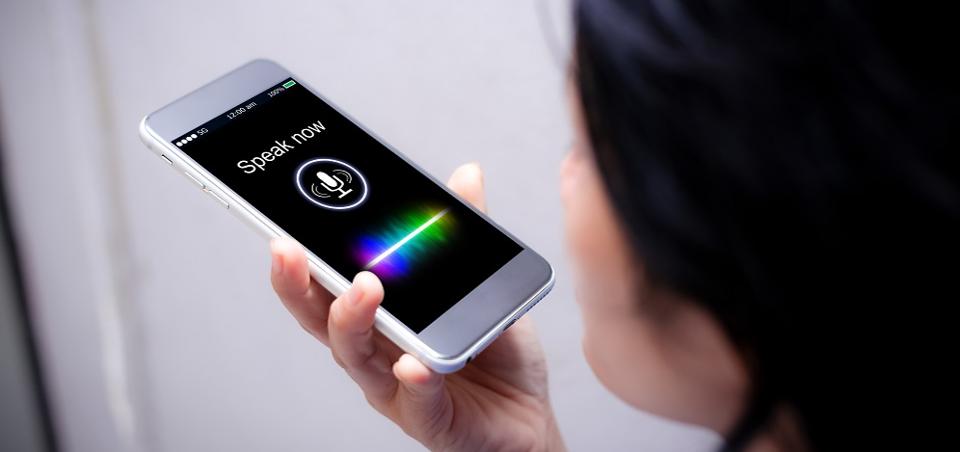
You’ve all heard the stat that in 2020 we would see 50% of all Google searches being conducted by voice (and as expected, that wasn't the case). With voice search technology still in its infancy and only 22% of UK households owning a smart speaker/home assistant device at the end of 2019, this 50% statement felt a little premature.
Across all generations, we found that only 27% have ever used voice search in any way in relation to a health & beauty product. This increased to 32% of Gen Z vs just 29% of Millennials. Which makes sense when you think about how Gen Z were practically born with a mobile device in their hands. They are the first generation to be actually “born digital” – growing up with access to the internet (and not by dial up as I remember), social media, smart devices etc.
Despite almost a third of all generations having used a smart speaker in relation to health & beauty, only 19% have used voice assistants to actually purchase a product – the highest generation being my fellow Millennials, with 24% saying they'd been able to stop thinking about their smashed avo long enough to do so. Interestingly, men are more likely to have used a smart speaker to purchase a product than women.
So, although you’d expect Gen Z to be more likely to use a voice assistant than Millennials, it’s Millennials who will more likely buy through them. This could however be down to financial status. Millennials are older and theoretically earning more money than Gen Z, so are more likely to make the purchase, whereas Gen Z may not have the money to buy all products they discover. By 2022, voice-based shopping is expected to jump up from £0.2bn to £5bn in the UK. In the USA, it’s expected to reach as high as £40bn. As Gen Z become more financially independent, we would expect this group to be spending more through voice assistants than Millennials.
Unsurprisingly, we found that 85% of all voice commands take place at home, with over half of our respondents saying that they use their assistant mainly in the living room or kitchen.
This makes sense to me, because it still feels weird to be walking down the high street chatting away to your Siri or Google assistant. It’s the same with wearing earphones whilst on the phone and walking around in public. You feel like a pariah, don’t you? Especially when you’re a girl with your hair covering your earphones – it literally looks like you’re talking to yourself.
I’m just not sure if there will ever be a day where you hear the command, “Hey Google, add Tampons to my basket”. It’s just not socially acceptable is it? But I wonder how voice search will be different among other cultures. As a Brit, our stereotype is that we’re polite, love to queue and horrendously reserved. Whereas if you take the stereotype of an American - brash, jovial, outspoken (I can say this, I married one) - maybe in the States it'll be more “normal” to be requesting your voice assistant to buy tampons whilst out in public?
On top of that, although voice is starting to become more established it’s still relatively basic and clunky, most often used for simple tasks like music playback, checking the weather forecast & news headlines or dimming lights. Giggity?
Over the next five years, voice will rapidly evolve as companies like Amazon lead the way. In 2019, Amazon filed a patent for their Echo device that can analyse a person’s voice to understand if they are experiencing feelings of happiness, joy or boredom. This means companies will need to think about how their brands will be heard in a screenless world. Use of tone, jargon and inflection will all need to be considered in the future.
Defining a voice search strategy
Voice search may not be hugely popular right now, but with the development of smarter phones and technology becoming more affordable, it will be an area brands need to consider carefully in their search optimisation. Defining a voice engine optimisation strategy will be key for a brands success in the future.
And how do you do this I hear you ask? Well, voice search uses more conversational tones which means a brand will need to optimise for long-tail keywords and phrases – not dissimilar to when mobile phone searches became the way people searched. Most queries on voice search are question based, which means the best way to ensure your brand is found through voice is to be visible in a featured snippet spot. Start researching what questions people type in to find your brand and develop landing pages to answer these queries.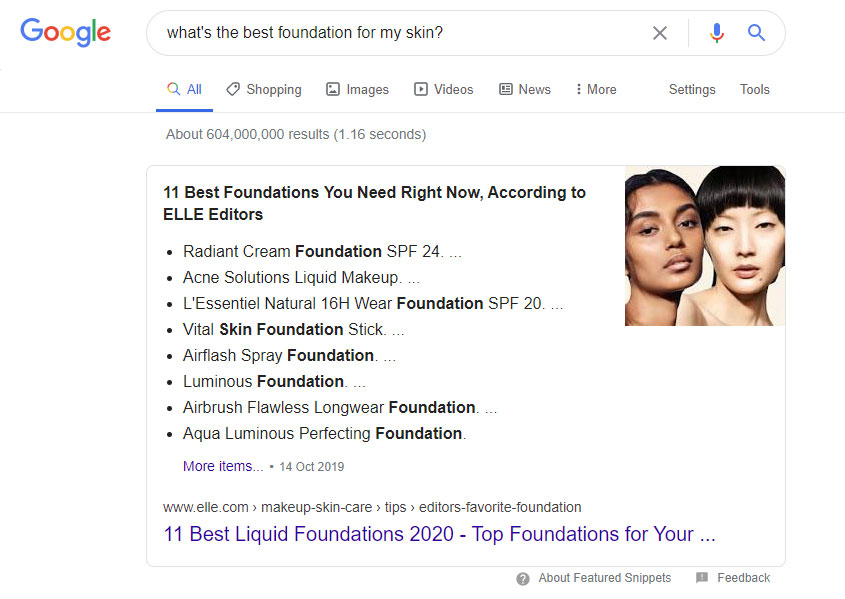
The other exciting technology for brands within the health & beauty category is augmented and virtual reality. From our report, we found that Gen Z prefer to buy in-store than online, but this is largely down to the experience they can have in-store from the likes of technology. Combing this in-store experience with digital is where we get the phrase “phygital”... but that's a whole other blog post.
The ability to virtually try on make-up, a new hair cut or hair colour via an app using your phone's camera from any location – in-store or at home – could prove to be something extremely useful for brands in the years to come. Apps such as Snapchat and Instagram have been playing around with AR filters for years, so the technology is not new. But seeing how brands are using it or how high street retailers are applying this tech in-store is still in its infancy.
Some brands are already making full use of virtual reality apps, creating deeper levels of consumer engagement and driving easier decision making. Our blog “Beauty and The Tech Beast” demonstrates this nicely with the Amazon try-on feature available for their make-up listings.
Another example was Dior’s Christmas 2019 campaign which saw them launch an augmented reality Instagram filter to showcase their holiday make-up collection. The filter is the latest augmented reality offering from the company, which previously created a virtual try on app for sunglasses and accessories. Having garnered 2.6 million impressions during Paris Fashion Week alone, it’s little wonder Dior is following in the footsteps of brands like Sally Hansen, L’Oréal and Benefit to further utilise augmented and virtual reality capabilities for brand promotions.
With the growth of fun filters on Snapchat and Instagram, Generation Z have grown up with augmented reality, making them prime targets for brands using this technology. From our survey we saw Generation Z were the most interested of any generation in augmented reality, with 32% claiming to have already used it in conjunction with a health & beauty product.
Given the opportunity, 72% of Gen Z would be interested in using augmented or virtual reality in the future to try on or understand more about health & beauty products, 9% more than Millennials.
For me, I still see augmented and virtual reality as a bit of a fad. The technology is still a bit clunky and not very user friendly. But, I like the idea of it, and retailers such as Lush and Mac who have embraced the technology in their Asian flagship stores have done particularly well.
As for voice, I think this one is more on the fab side. It’s still not quite there, but I can see how useful this technology will be in the future – especially with voice assistants becoming more affordable.
What I’m really looking forward to is having a house full of smart devices, all connected together and providing me the best (laziest) experience of all. Imagine walking in from work and your smart watch tells the lights, oven and TV to turn on – no longer do I have to walk around like a chump turning things on! And with improved voice search, maybe there will be a time I could command my vacuum to start hoovering with just a simple “Dyson, hoover”?
I know Busted predicted that by the year 3000 we’d be living underwater, but I think we’ll all be obese slobs getting our smart devices to do everything for us, much like what WALL-E predicted.

Posted 25 February 2020 by Virginia Girtz